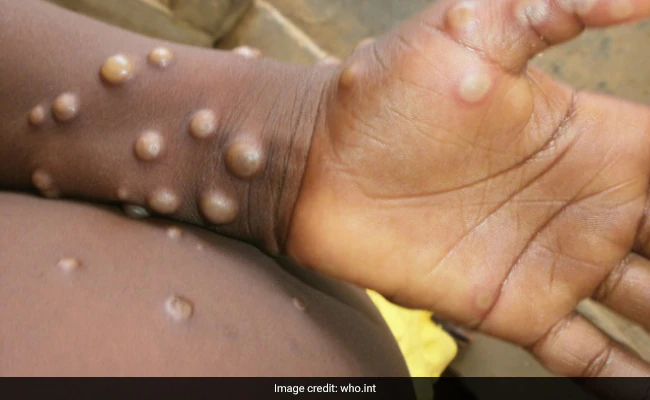Introduction
What exactly is monkeypox? Why is this making headlines throughout the world? Is this another reason to be concerned? And what exactly do we know about this disease? Everything we currently know, you will also know. Monkeypox is a viral ailment caused by the Monkeypox virus, which can be passed from animals to people as well as infected humans to humans. It exhibits symptoms that are quite similar to smallpox but are less severe. Monkeypox was previously known to infect persons living near tropical rainforests in West and Central Africa, but it has already moved to metropolitan areas. Non-human primates (monkeys) and rodents are the most common carriers.
There have been no documented cases in India as of yet. Over 100 instances have been documented in 12 countries worldwide. The rise in reported cases across different nations is concerning, and WHO has emphasised the importance of monitoring and surveillance the spread of monkeypox in India as well.
History
Monkeypox was first detected in 1958 in monkeys kept in laboratories for research. The first human infection occurred in the Democratic Republic of the Congo in 1970. The virus has now been identified in Cameroon, Ivory Coast, Sierra Leone, Nigeria, Gabon, Liberia, the Republic of Congo, and the Central African Republic. Because of foreign travel or imported animals, the disease has now spread globally.
On May 21, 2022, WHO (World Health Organization) reported 92 confirmed cases in 12 countries, including Australia, Canada, France, Germany, Italy, Sweden, Spain, Belgium, the Netherlands, the United Kingdom, the United States of America, and Portugal.
What are the symptoms of Monkeypox?
The average time between becoming infected and exhibiting symptoms is 7 to 14 days, but the range is 5 to 21 days. There are two types of monkeypox symptoms:
Invasion phase: This time lasts between 0 and 5 days and is responsible for-
- Fever with or without chills
- Headache
- Swelling of the lymph nodes
- Muscle ache
- Backache
- Extreme weakness
Monkeypox is distinguished by swollen lymph nodes, as the initial symptoms are identical to chickenpox, smallpox, and measles.
- The second period: This stage begins between 1-3 days of fever and the appearance of skin lesions. The rashes appear first on the face and then spread downward. Rashes on the face and hands/feet are more common. Genitalia, the cornea of the eyes, and oral mucous membranes are occasionally implicated.
Rashes begin as flat red lesions (macules), then grow into raised lesions (papules), lesions filled with clear fluid (vesicles), and lesions filled with yellow fluid (pustules). However, the lesions ultimately dry up and fall off without leaving any scars.
Are there any tests to detect Monkeypox?
Blood tests are ineffective in diagnosing monkeypox. Because the virus only lingers in the bloodstream for a brief time, blood tests are not considered very conclusive. Lab tests that examine fluids from skin lesions are more successful for diagnosis. To confirm the diagnosis, the POLYMERASE CHAIN REACTION (PCR) and NUCLEIC ACID AMPLIFICATION TEST (NAAT) are used.
Biopsies may also be conducted. Clinical signs and symptoms are frequently useful in assisting your doctor in diagnosing the ailment.
How does Monkeypox spread, and how can it be avoided?
Monkeypox is a zoonotic virus that spreads from animals to humans and subsequently from humans to other humans. The disease is spread through direct contact with sick animals or humans with the following:
- Bodily fluids
- Blood
- Skin lesions
- Mucous
- Respiratory droplets
While the person-to-person transmission is rare, the virus enters the body via breathing, broken skin (visible intact skin on naked eyes), or mucous membranes. Monkeypox is only transmitted to people through prolonged and direct face-to-face contact and big respiratory droplets.
Monkeypox can also be spread through:
- Any product of infected animals
- Bites or scratches from an infected animal
- Contact with tainted bedding or other items
Prevention of monkeypox is heavily reliant on lowering your risk of infection through the aforementioned ways.
A recognised case of monkeypox must isolate himself/herself, and the patient’s bedding, clothes, and utensils must be treated separately.
Do we have a treatment for Monkey Pox?
There is currently no cure for monkeypox. However, the condition is self-limiting and improves without treatment. Your doctor may recommend medications to treat the symptoms, and antiviral medications may be prescribed if necessary. Good nutrition and hydration are always beneficial in the recuperation process.
The smallpox vaccine, according to WHO, is 85 per cent effective in preventing the spread of monkeypox. If you catch monkeypox as a child after receiving the smallpox vaccine, your symptoms should be moderate. JYNNEOS is a vaccination that has been clinically proven to be successful in animal studies and is currently on the market in the United States.
Key takeaways
Currently, no cases of monkeypox have been reported in India, but we must remain vigilant and aware of the symptoms because monkeypox is a contagious illness that spreads from an infected person or animal to others. It is a self-limiting condition, but it is important to see a doctor for proper management, especially if you have skin eruptions that can help doctors diagnose the disease. It is best to avoid home remedies and follow doctors’/professionals’ instructions because skin lesions can look like chickenpox, measles, or scabies. We have become more conscious and attentive to worldwide rising pandemics since the Covid–19 pandemic, and we are ready to deal with any new sickness that comes our way. We can weather any storm, big or small, with observation, education, and prevention!


